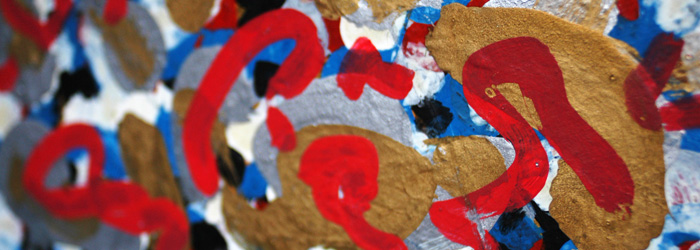his work
Carlos Silva started painting figurative works as most if not all artists. While he was studying at Vicente Puch’s workshop, Silva was making a pragmatic drawing of a living model that was posing for the students. At that moment he believed that through copying an object, it would be known as it genuinely was. He did not take too long in realize that he had a remarkable creative capacity and he was naturally gifted in painting on his own. It was at that time that Carlos Silva realized the change and stated: “… I had never considered leaving aside the academic training, but I was decided, truly decided…”.
In 1949, he left Vicente Puch’s wokshop, while a Cubist exposition was taking place at the Museo Nacional de Bellas Artes, where he discovered Braque and Picasso’s paintings. This new way of observing objects and people, i.e. cubism, lead him to question the whole role of figurative art. Since then, he started immersing himself in new theoretical readings about Cubism and other emerging movements. New concerns arose on his mind after reading Wassily Kandinsky, Piet Modrian and Tomas Maldonado. Carlos Silva’s first cubist painting was a copy of Pablo Picasso´s “Gertrude Stein “portrait. He was fascinated by the cubist square´s composition where the focus was centered in the division of each plane. Here he used paper, and obtained different textured qualities thanks to the blend of oil and binder.
Influenced by the geometric abstraction and constructivism, Carlos Silva reached his professional maturity. He took all his creations to a rational plane, achieving the synthesis and abstraction of each of the elements that give shape to an art work. Motivated by Mondrian and Kandinsky, he started using the basic geometric figures like rectangles, squares, circles and triangles in a rigorous way. The creations of this period do not belong to the real world and are merely a product of the author’s imagination. He started to experience with color and perspective, always guided by a reflexive coherence. The logic reticulated lines and successive dots appeared in his work creating perspective and a feeling of infinity. It is here where the dots’ compositions flow into an axis direction, growing into a bigger unique orientation. The concave and convex shapes help to create space and volume. Carlos Silva was also a topologist of space, where he experimented with paper and wood. Among the elements he used to paint, we can find the airbrush that has the effect of shapes spinning and becoming diffused across the paper. Carlos Silva achieved the creation of a rigid and harsh climate in each of his paintings thanks to the use of opaque and rough shades. During the last decade of his career he started using acrylic and pastel colors.
Throughout this period Silva discovers in math the technical stringency to produce the sensation of space, perspective and movement that he was looking for through the geometric shapes. The mathematician Henri Poncare showed him the concept that nature is reduced in its essence to geometric figures. And this was how Carlos Silva started to create by using an arithmetic progression composed by a rule of three simple divided by the square root as a formula for his paintings. Thanks to the use of math, reticulated lines started to appear on the paper. It worked as a structure to different lines of dots. On the artist words, “… I greatly enjoyed the making of these paintings, even though it was an arduous work, I was putting sixteen tiny stains of different colors inside a reticulated area. I was utterly surprised once I discovered that one of my works was composed by two million of little dots…”
As he was improving his theory and practices, the dots’ plots and some different shapes appeared, spreading out from a central dot to the infinity. Carlos Silva said “… [m]y experiences in art were directed to accomplish a systematization of some plastic phenomenon that appeared successively as typical reactions of a training based, not only in formal elements of the painting, but also exploiting all the possibilities of the human being. In other words, a conjunction of: intelligence, intuition, feelings and his internal and external reality”.
Later in 1965 he was acknowledged for his discoveries and brightness in the plastic arts, and awarded with “Torcuato Di Tella” national prize. Guilio Carlo Argan, one of the international judges, highlighted his work’s originality and the fact that he anticipated Vasarely’s works of dots displayed to the infinity by one year.
Through all the works of Carlos Silva, rationality and theory are remarkably noticeable. However, the artist never left aside his intuitions and emotions, and he captured them in each of its works through the set of colours and shapes he created. He incessantly challenged strong traditions in each aspect of his work. He always used a table instead of a regular painting stand, explaining: “[t]hat explains why my things do not show gravity or up and down directions. Using that angle for painting also prevents painting gushes”. He stated: “I do not look for premeditated neatness; but if it naturally happens, it is better. I paint in a more rustic way, like Americans, completely opposite to the European’s clean and neat style”
Each of his career periods reflects an in-depth research. He did not try to follow painting tendencies at any time. Everything was the product of a personal search that leaded Carlos Silva to create one of the most stunning Argentinean art styles, recognised for his precision, pureness and originality.
